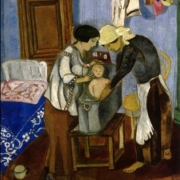Finding and hiding: Winnicott’s potential space and Raspberry Juice’s home
Abstract
The paper discusses some analytical dynamics and terms as reflected in a Hebrew children tale, named “Raspberry Juice”. The tale deals with the question of closure and disclosure, with the need to be discovered as against the fear to be found, or in fact with the existential tension described by Winnicott in innumerable variations between the need to be understood and recognized and the fear to be completely understood or inadequately exposed. It also deals with the process of creating one’s identity, taking place within the potential space, enabling one’s mobility between “me” and “not-me”, between imagination and reality, between the need to hide and the need to be discovered, and perhaps thereby – between the need to take part and the need to Read more

